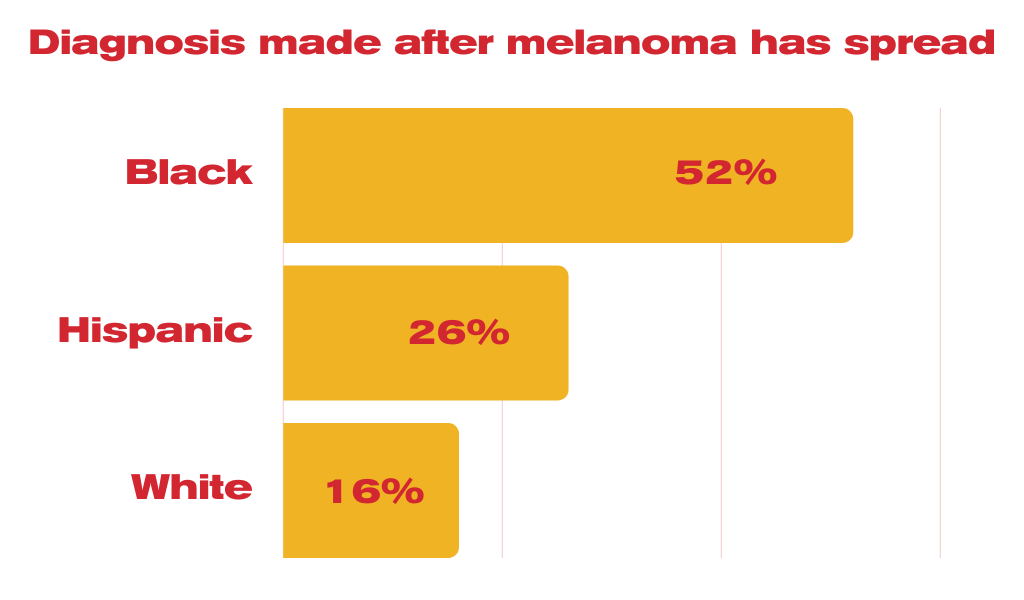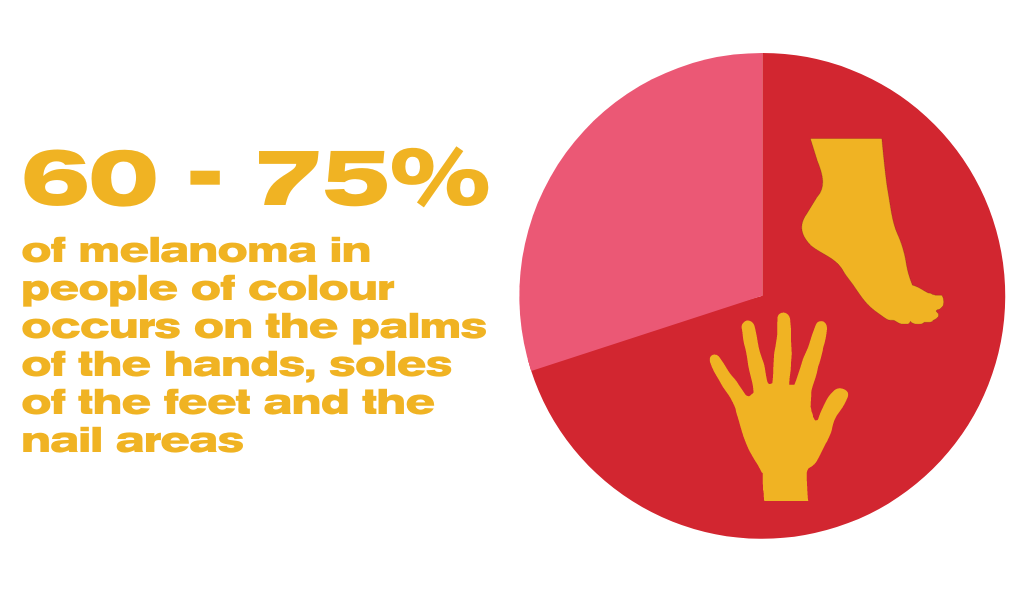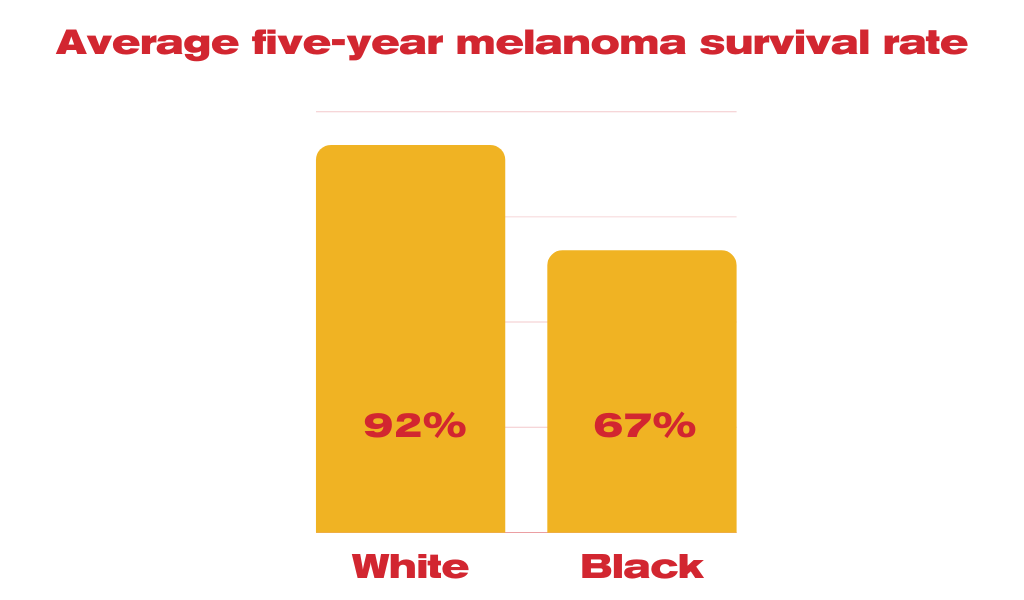Skin cancer does not discriminate. People of all skin tones, including those with brown or black skin, get skin cancer. Even if you never sunburn, you can still get skin cancer.


AWARENESS
Skin cancer is less common in people of colour, but when it does occur, it’s often diagnosed at an advanced stage and has a worse prognosis. This can be deadly when the person has melanoma. Treatment for any type of skin cancer can be difficult in the late stages.
According to experts, there’s a lower public awareness overall of the risk of skin cancer among people of colour.
Also, from the perspective of health-care providers, there’s often a lower index of suspicion for skin cancer in patients of colour, because the chances of it actually are smaller. So these patients may be less likely to get regular, full-body skin exams.
PRESENTATION
In people of colour, skin cancer often develops on parts of the body that get less sun like the soles of the feet, lower legs, and palms, which makes detection more difficult.
- Up to 60 – 75% of melanoma in people of colour occurs on the palms of the hands, soles of the feet and the nail areas.
- This cancer may also begin around the anus, or on the genitals.
The risk factors for acral melanomas are not fully understood — acral meaning on the hands and feet — but sun is less likely to be a factor.
In melanomas on the whole, UV radiation is certainly a major risk factor, and there are plenty of UV-induced melanomas and squamous cell carcinomas in people of colour, who can have a wide range of complexions, from very fair to very dark. But the proportion of skin cancers that occur in non-sun-exposed sites is greater in darker-skinned populations.
About 50% of basal cell carcinomas (BCCs) are pigmented (meaning brown in colour) in darker-skinned patients. If you look at the typical photos of BCCs used in educational materials — most of which focus on light skin — you’ll see a pink, pearly growth that may or may not be crusted. What you’ll almost never see is an image of a brown, slightly translucent lesion. Yet about half of BCCs in darker-skinned patients are brown, or pigmented, and thus easier to miss.

LATE DIAGNOSIS
Skin cancer is less common in people of colour, but when it does occur, it’s often diagnosed at an advanced stage and has a worse prognosis. This can be deadly when the person has melanoma. Treatment for any type of skin cancer can be difficult in the late stages.
- About 52% of Black people and 26% of Hispanics find out they have melanoma when it has already spread, compared with 16% of White people.
- One study, found an average five-year melanoma survival rate of only 67% in Black people versus 92% in White people.

GAP IN MEDICAL KNOWLEDGE
There is a distinct lack of racial diversity in medical images of skin conditions. To address this gap, we have been working with a medical student to help collate resources that depict skin cancer, and other skin conditions, in people of colour. View the full document here: Skin of Colour: Skin Cancer Image Sources or click on the image below to expand.
SOURCES:
- The Skin Cancer Foundation, https://www.skincancer.org/
- American Academy of Dermatology Association, https://www.aad.org/
- WebMD, https://www.webmd.com/
- Gloster HM, Neal K. Skin cancer in skin of color. J Am Acad Dermatol 2006; 55:741-60. https://www.jaad.org/article/S0190-9622(05)02730-1/fulltext



